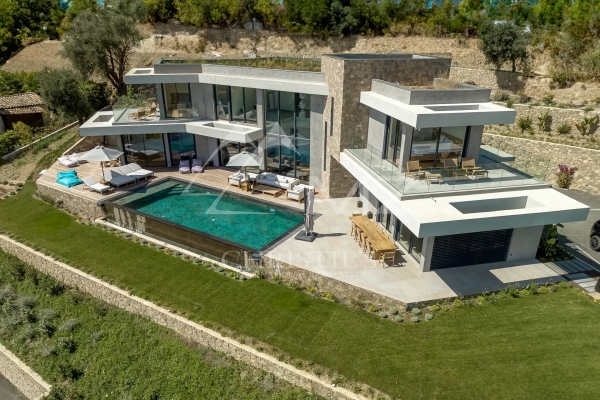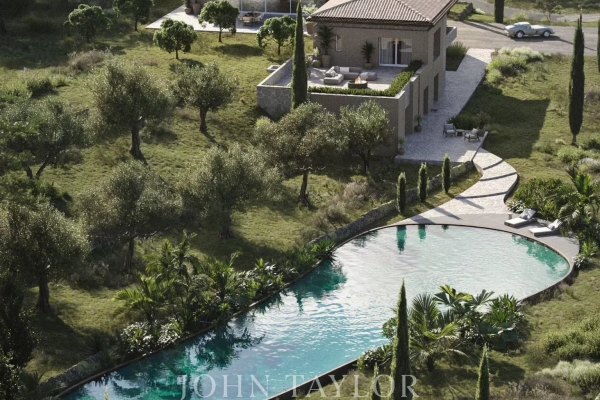Cap d'Antibes
Behind that of Cap Ferrat, its property market undergoes the occasional change.
This famous cape starts at the bay of La Garoupe and ends in Juan-les-Pins. Only slightly behind that of Cap Ferrat, its property market undergoes the occasional change, but never slows down.
It’s hard to imagine that in place and stead of this Garden of Eden, rock once reigned supreme. Aurélien Monnier of the Agence du Cap d’Antibes is an expert on the subject : “In the late 19th century, James Wyllie brought in the soil that was to create the foundations for the cultivation of roses. Meilland, Leonetti, Astoux and Richardier shared the land. It was then that the first mansions were built, by the British who came for holidays. The Hôtel du Cap-Eden Roc, considered as one of the loveliest in the world, opened its doors in 1870. Fifteen years previously, the botanist Thuret had introduced plants, hitherto unknown, onto the cape, such as palm-trees and eucalyptus. Antibes pursued its development and the port became a popular venue for sailing enthusiasts. Juan-les-Pins came into its own as of 1920, intensifying its development from 1950 to 1960. These were the days of jazz and American visitors. Today, Cap d’Antibes functions rather like a village with its own shops and school : it is home to four to five thousand villas, very often solely used as holiday homes”.
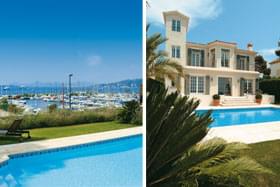
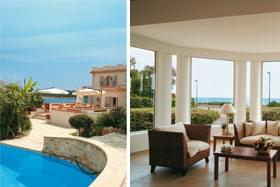
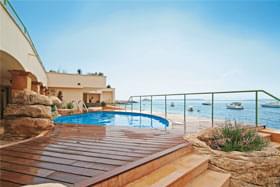
Aurélien Monnier notes the arrival of clients reluctant to pay the high prices on Cap Ferrat. In Antibes, purchasers are very demanding and, under the pressure of demand, quality homes are beginning to prove scarce. Prices start at 1 million €, which will buy a small house with a small garden, no view and no pool. Average transactions swing from 1.5 to 3 million € giving living space of 150-250 m2 (4 bedrooms) in grounds of 1,500-2,000 m2 with a glimpse of the Med. The top end of the market ranges from 20 to 30 million €, and even higher, bringing a park of 2.5 to 5 acres with swimming pool and tennis court. Really sumptuous properties include the Château de la Garoupe with its 32.5-acre park, the Villa Aujourd’hui, built by Mallet-Stevens for John Warner, and the Château de la Croë, formerly owned by Prince Edward VII and Onassis.
While residents on Cap Ferrat enjoy the proximity to Monaco, those on Cap d’Antibes appreciate being halfway between Cannes and the International airport in Nice. They are mostly European, Anglo-Saxons, from the eastern bloc, Brazil or Argentina. They prefer the west side of the peninsula to the east. They dream of Millionaires’ Bay, to the south, but soon realise that few properties come up for sale. Finally, they are quite prepared to take on renovation work.
Marc Pradal of Pradal Immobilier describes the very select micro-market between the Hôtel du Cap-Eden Roc and Les Belles Rives. On the subject of prices, he even dares a touch of irony : “Since 2000, the figures have remained unchanged, except that now they’re in euros”. He mentions a villa of 200 m2 in a garden of 1,100 m2, a stone’s throw from the town and beach, sold for 15 million €. He also refers to the Russians, their fondness for large estates around Millionaires’ Bay, and the recent but serious arrival of Irish buyers, drawn by direct flights from their home country to Nice. “A seafront property in this neighbourhood is worth twice as much as the same at Théoule-sur-Mer, 30 % less than if it were on Cap Ferrat. The two capes are to the Côte d’Azur what Les Parcs are to Saint-Tropez. As for those rare villas with direct access to the sea, they crystallize dreams and fantasies, and are never affected by crises.” Sébastien Jamoulle of JJC International stresses the penury of properties for sale. “A client with a budget of 4 million €, for example, can only visit a handful of properties.” Houses with the most modest sea view are priced at 3 million € (300 m2 requiring refurbishment in grounds of 1,500 m2). For identical properties, the price can double between the east and west sides of the cape. There are also a few estates, these days a very popular option : Le Parc Saramartel (with 52 villas), Empel (about 10), Le Cap (25), Eden du Cap (9), Les Chênes Verts (15), Les Hauts de la Garoupe (11), La Presqu’île du Cap (4)…
Speculation is still possible and property dealers are always hunting around. One example is a house of 160 m2 in grounds of 1,300 m2 in the Parc Saramartel priced at 2.4 million €, which has benefitted from successful renovation. Building land is even rarer. Aurélien Monnier mentions a plot of 2,000 m2, offered at 1.2 million €. Apartment blocks are few and far between, probably due to dissuasive measures laid down in the Land Use Plan. On a plot of over 1,500 m2, living space can only equal 10 % of the total premises, and the height of the building is restricted to 7 metres. Sébastien Jamoulle nevertheless points to a few desirable residences : Aurélia Roc, Le Château de la Pinède and Port Galice. Expect to pay at least 12,000 €/m2 for an apartment on a high floor with sea view. At the moment, Port Gallice, for example, has a 1-bedroomed flat of 83 m2 for sale at 950,000 €.
Finally, seasonal rentals are a source of income which is not to be overlooked. In fact, potential buyers always ask about a property’s rental value. “Renting a property enables owners to cover their costs of up-keep and even make considerable profits,” says Sébastien Jamoulle. A seafront property of 200 m2 (5 bedrooms) with a pool and a terrace of 600 m2 will rent for 6,500 € a week in the high season, a villa with 7 bedrooms in grounds of 1,500 m2 for 10,000 €. The occupancy rate is close on 50 % in July.
By Laetitia Rossi - Photos Edith Andreotta

